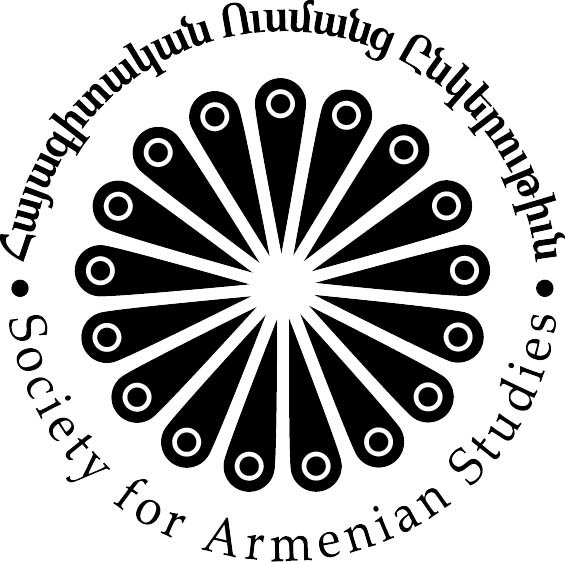The Society for Armenian Studies (SAS) sponsored two panels at the 55th Annual Conference of Middle East Studies Association (MESA) and one panel during the 53rd Annual Convention of the Association for Slavic, East European, & Eurasian Studies (ASEEES). Panels held during the MESA conference included, “Early Modern Mobilities: People, Animals, and Objects within and beyond the Ottoman Empire” followed by “Fault Lines and Fractures in the 2020 Artsakh/Nagorno Karabakh War.” The ASEEES conference included “History, Politics, and Memory: The South Caucasus from the Romanovs and Ottomans to the Putin-Erdogan Era.” All panels were held virtually this year within the same week, which began from November 30th and culminated on December 2nd.

The first panel held during the MESA conference, “Early Modern Mobilities: People, Animals, and Objects within and beyond the Ottoman Empire,” was organized by Daniel Ohanian (UCLA) and chaired by Natalia E. Rothman (University of Toronto). The panel focused on various forms of mobility during the 17th and 18th centuries, drawing attention to the ways in which movement connected the lives of those who lived within that period.
The first paper “Genres in Transit: Movement of Geographical Forms in the Early Modern Ottoman Empire” by Isin Taylan (Yale University), traced continuity and change in geographical knowledge over 200 years. The papers, “The Empire Comes to Town: Towards a Social History of Sultan Mehmed IV’s (r. 1648—87) Extended Residence in Ottoman Yenişehir, 1668-69” by Arlen Wiesenthal (University of Chicago) and “Printing Pilgrimage: Replication and Imagination between Tokat and Jerusalem” by Erin Pinon (Princeton University), focused on subjects in the 1600s. The last paper “Mobility, Captivity, and Autobiography: The Tribulations of Bishop Awetik’, 1706-1711” delivered by Ohanian, reflected on mobility and captivity around 1700.

The second panel within the MESA conference, “Fault Lines and Fractures in the 2020 Artsakh/Nagorno Karabakh War,” was organized and chaired by Sossie Kasbarian (University of Stirling). This interdisciplinary round table aimed to address the representation of the 2020 war in Artsakh/Nagorno-Karabakh and the failure of scholars within Middle East Studies to engage with it. Participants joining the discussion included, Elyse Semerdjian (Whitman College), Bedross Der Matossian (University of Nebraska-Lincoln), Rachel Goshgarian (Lafayette College), Tamar Shirinian (University of Tennessee, Knoxville), and Kevork Oskanian (University of Birmingham).
The first speaker was SAS president Bedross Der Matossian who argued that all aspects of the war were manifestations of transformations that took place in the Middle East since the Arab Spring. He contended that there is a direct connection between the Middle East and the Caucasus. In examining the disengagement of Middle Eastern scholars, Der Matossian said, “The reluctance of Middle Eastern scholars to take a stance on the struggle for self-determination of Armenians of Artsakh is the result of ignorance and ambivalence or viewing the Armenians of Artsakh as an occupying entity.”
Elyse Semerdjian, professor of Islamic World/Middle Eastern history at Whitman College, discussed the shared history of the Middle East and North Africa (MENA) and the Caucasus to highlight why the region of Nagorno Karabakh/Artsakh should matter to scholars of the Middle East. Semerdjian’s discussion served as a call for researchers to “decolonize both regional fields of study and instead consider how they are linked through global militarization, the struggles and setbacks for democracy, ethnic cleansing, transnational militants/mercenaries, oligarchy, and a particular brand of authoritarianism that exists in both spaces.”
In discussing how an individual or collective imagines contemporary identities, Rachel Goshgarian examined the trickle-down effects of the absence of Armenian history within the Republic of Turkey. Goshgarian’s paper analyzed “how these lenses could impact individual and collective political responses to military aggression against Armenians that has been explained by many politicians as rooted in issues related to identity, in a region at the crossroads of the Ottoman, Qajar, Russian and Soviet postcolonial worlds.”
Further adding to the discussion, Tamar Shirinian reflected on the main objects of studies that inform Armenian studies. Shirinian delved deeper to explore “the main conceptual frameworks that have been brought to bear on ‘Armenia’ and how these may be speaking to the larger field of Middle East Studies in particular ways and failing to take into consideration other objects – objects improper to a line of questioning within and outside of Armenian Studies.”
In closing, Kevork Oskanian, an honorary research fellow at the University of Birmingham, examined the ability for subjects to speak and be heard within Western-dominated hierarchical international orders. Oskanian argued, “While most Western scholars and analysts tried to adopt a dispassionate or critical stance, a small minority used their traditionally privileged position as outside observers with a presumption of objectivity to push openly subjective, idealizing narratives that glorified or excused one side over the other.”

In addition, the SAS sponsored the ASEEES panel, “History, Politics, and Memory: The South Caucasus from the Romanovs and Ottomans to the Putin-Erdogan Era,” organized by Asya Darbinyan (Northern Arizona University) and chaired by Stephen Badalyan Riegg (College of Liberal Arts at Texas A&M University). The panel looked to the past and present when examining the intersectionality of politics, history and memory in the South Caucasus. Papers included “Violent Memories: The Entangled Histories of Bolsheviks and Kemalists in the South Caucasus” by Ani Ohanian (Clark University) and “Between Moscow and Ankara: Anastas Mikoyan and Armenian National Narratives during the Thaw, 1954-1964” by Pietro Shakarian (American University of Armenia).
Darbinyan analyzed the Russian Empire’s response towards the evacuation of Armenian refugees in her paper “’Deceived’ or ‘Saved?’: Russian Authorities and the Ottoman-Armenian Refugees in the Caucasus during the First World War.” Additionally, Darbinyan examined the sentiment of deception and abandonment by exploring the experiences of those displaced at the Caucasus front.



Be the first to comment